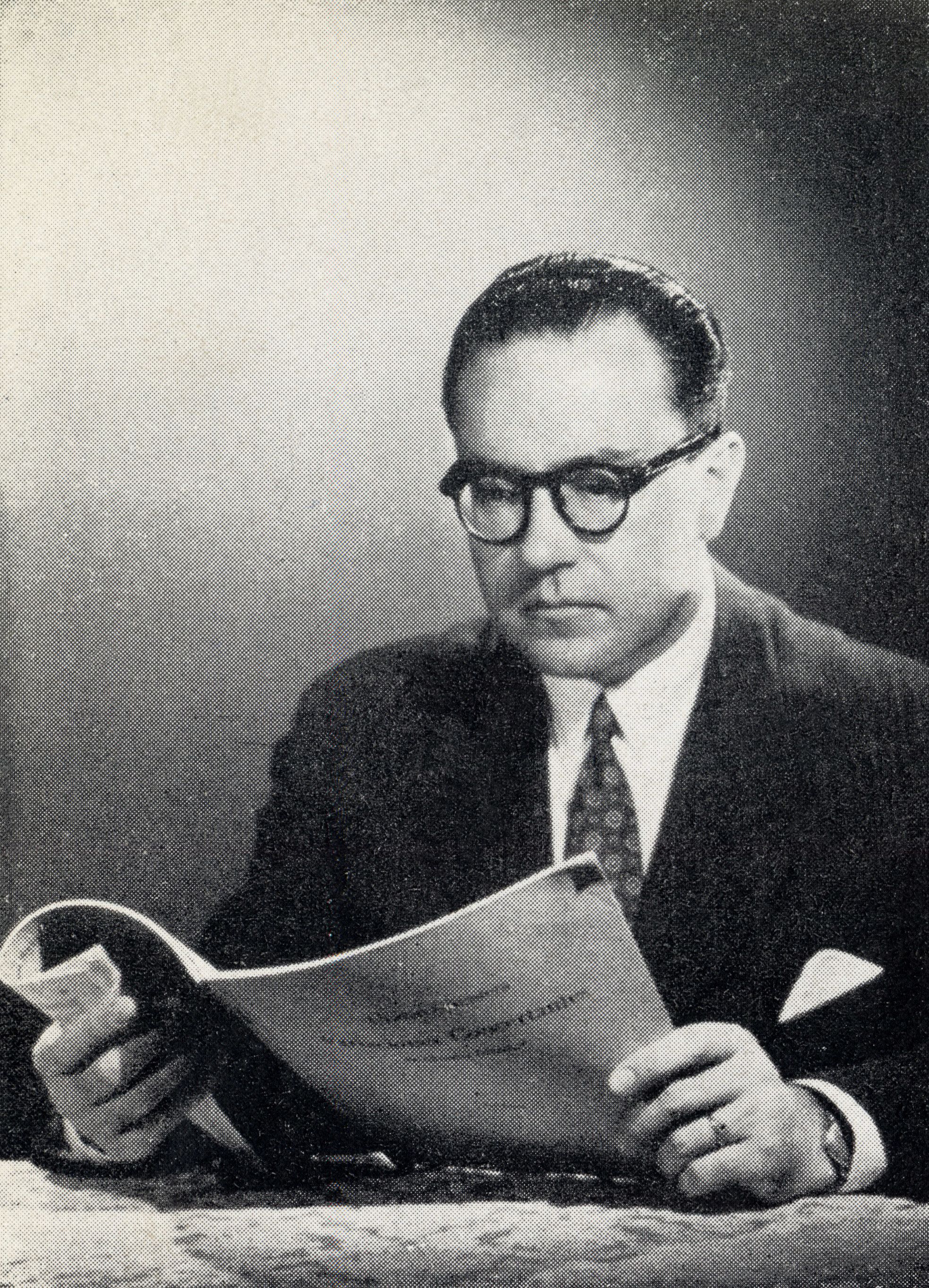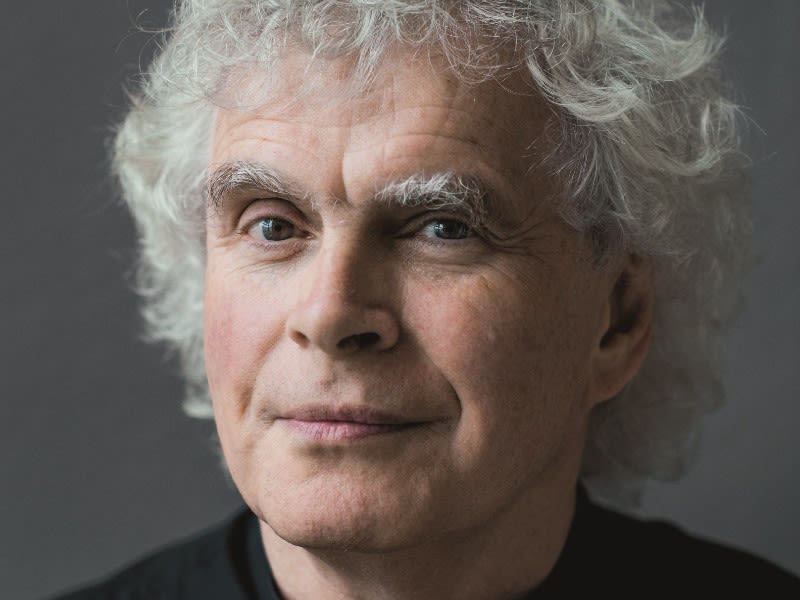London Symphony Orchestra Spring 2021
Ginastera, Gerhard & Dvořák

Dvořák’s career took him all the way to America, but he never lost his Czech accent, or his knack for a great tune. He’s the beginning and end of an adventure that takes us from the Bohemian countryside of his delightful Wind Serenade to the Argentinian pampas of Alberto Ginastera and the fairytale Spain of Roberto Gerhard’s Don Quixote.
So expect sunlit melodies, pounding dance rhythms and glowing colours – all sounding more vibrant than ever in the informal space of LSO St Luke’s. But expect something more, too. Gerhard was in exile in Britain when he imagined the exploits of Don Quixote, and even a composer as optimistic as Dvořák let pangs of homesickness seep into his playful American Suite. The tunes are wonderful, but the emotions behind them are even more potent.
Ginastera, Gerhard & Dvořák
Antonín Dvořák Serenade in D minor Op 44
Alberto Ginastera Variaciones concertantes Op 23
Roberto Gerhard Dances from Don Quixote
Antonin Dvořák American Suite Op 98b
Sir Simon Rattle conductor
London Symphony Orchestra
This performance is broadcast on Marquee TV. Available to watch for free for seven days from Thursday 4 February 2021, then on demand with a subscription.
Recorded at LSO St Luke's on Saturday 9 January 2021 in COVID-19 secure conditions.
Welcome and Thank You for Watching
Whilst we are unable to come together with audiences at our Barbican home, we are pleased to continue releasing a programme of online content and streamed broadcasts, making music available for everyone to enjoy digitally in the coming weeks. A warm welcome to the numerous conductors and soloists joining us, among them many firm friends and regular collaborators with the Orchestra. We are delighted also to welcome back members of our family of conductors.
It is a pleasure to invite you to watch and listen today online, and we extend thanks to our broadcast partner Marquee TV for streaming this concert. I hope you enjoy the performance, and look forward to welcoming you back in person when we are able to re-open our doors.

Kathryn McDowell CBE DL; Managing Director
Kathryn McDowell CBE DL; Managing Director
Support the LSO's Future
The importance of music and the arts has never been more apparent than in recent months, as we’ve been inspired, comforted and entertained throughout this unprecedented period.
As we emerge from the most challenging period of a generation, please consider supporting the LSO's Always Playing Appeal to sustain the Orchestra, allow us to perform together again on stage and to continue sharing our music with the broadest range of people possible.
Every donation will help to support the LSO’s future.
You can also donate now via text.
Text LSOAPPEAL 5, LSOAPPEAL 10 or LSOAPPEAL 20 to 70085 to donate £5, £10 or £20.
Texts cost £5, £10 or £20 plus one standard rate message and you’ll be opting in to hear more about our work and fundraising via telephone and SMS. If you’d like to give but do not wish to receive marketing communications, text LSOAPPEALNOINFO 5, 10 or 20 to 70085. UK numbers only.
The London Symphony Orchestra is hugely grateful to all the Patrons and Friends, Corporate Partners, Trusts and Foundations, and other supporters who make its work possible.
The LSO’s return to work is supported by DnaNudge.
Generously supported by the Weston Culture Fund.
Share Your Thoughts
We always want you to have a great experience, however you watch the LSO. Please do take a few moments at the end to let us know what you thought of the streamed concert and digital programme. Just click 'Share Your Thoughts' in the navigation menu.
Antonín Dvořák
Serenade in D minor Op 44
✒️1878 | ⏰25'

1 Moderato quasi marcia
2 Minuetto tempo di minuetto
3 Andante con moto
4 Finale allegro molto
Dvořák wrote two Serenades, one for strings and the other for wind ensemble. The Wind Serenade dates from a time when Dvořák – by then in his mid-30s – had begun to make a name for himself by winning the Austrian State Stipendium (a cash prize offered to promising composers within the Habsburg Empire) several years in succession. He had attracted an important musical advocate in fellow composer Johannes Brahms, who was enchanted by Dvořák’s Moravian Duets, and recommended them to his own publisher. The result, in the spring of 1878, was Dvořák’s first major international hit, a set of Slavonic Dances. At much the same time, he composed the Serenade for winds, of which Brahms wrote: ‘It would be difficult to discover a better, more refreshing impression of truly abundant and charming creative talent’.
This delightful work sits firmly within the classical Serenade tradition: it opens with a forthright march coupled with a lyrical trio, which returns once more to close the movement. The following minuet is actually a Czech folk-dance, the sousedská, while the syncopated rhythms of the livelier trio recall Czech composer Bedřich Smetana's favourite dance, the furiant. The throbbing horn accompaniment to an exquisite melody woven by oboe and clarinet in the third movement recalls the opening of the slow movement of Wolfgang Amadeus Mozart’s Wind Serenade in C minor. The dance-like finale is interrupted shortly before its end by a reminiscence of the opening march.
Note by Wendy Thompson
Antonín Dvořák
1841–1904 (Bohemia, now Czech Republic)

A country boy at heart, Dvořák was born in 1841 in a village just north of Prague (now in Czech Republic), one of nine surviving siblings (he would go on to have nine children of his own, three of whom died in infancy). Although his father had wanted him to follow in his footsteps and become a butcher, he recognised his son’s talent and ensured his music education was robust, including violin and organ lessons which both stood him in good stead. Dvořák’s heart belonged to composing but, while making his way in that particular sphere, he made his living initially as a church organist, and then as a violin and viola player in the Prague Provisional Theatre.
He won a government-sponsored composition competition, which allowed him to start making his way, and he went on to teach composition at the Prague Conservatory. But Dvořák was a grafter, and it was only in 1878 that things really started to happen – backed by his friend and fellow-composer Brahms, his first set of Slavonic Dances were a hit and he was invited to top job at the National Conservatory of Music in New York City ‘to help American composers find an American voice’. Dvořák’s stamp on the musical world was cemented, and he never looked back.
Once back on home soil, his final years were happy and contented. He settled back into life in his Czech homeland with his wife and was deeply mourned as a national hero when he died of a heart attack in 1904.
During the 19th century a wave of nationalism spread across Dvořák's home country and the composer is seen as an exponent of using folk idioms. An exceptional melodist, his tunes are littered with nationalistic flavour although he never quotes directly.
Composer profile by Sarah Breeden
Alberto Ginastera
Variaciones concertantes Op 23
✒️1953 | ⏰21'

1 Tema per violoncello ed arpa
2 Interludio
3 Variazione giocosa
4 Variazione in modo di scherzo
5 Variazione drammatica
5 Variazione canonica
6 Variazione ritmica
7 Variazione in modi di moto perpetuo
8 Variazione pastorale
9 Interludio
10 Ripresa dal tema
11 Variazione finale in modo di rondo
When Gustav Dudamel bounced onto the Royal Albert Hall podium in 2007 with the amazing Simón Bolivar National Youth Orchestra of Venezuela, the audience was blown away by their exhuberant interpretation of Ginastera’s Estancia, arguably, bringing the Argentinian’s music to a generation of new ears.
There are elements of Estancia in Variaciones concertantes, a lesser-known work: its Argentinian roots are very much evident, including the rhythms of the macho 16th-century malambo dance, and songs of the once-reviled, now-lauded Gaucho (the indigenous south American cowboy), indicative of the reappraisal of national culture that took place in Argentina during the late-19th and early-20th centuries. Similarly to Dvořák, Ginastera gives an essence of this folk music rather than literal quotations. ‘[Variaciones] has a subjective Argentinean character,’ wrote the composer. ‘Instead of employing folklore material, an Argentinean atmosphere is obtained by the use of original melodies and rhythms.'
Commissioned in 1953 by the Argentine Friends of Music, Ginastera scored the set of variations for a chamber orchestra, each section having a starring role. A mournful, mesmerising cello takes centre stage first, luring us into the first movement, with a simple harp accompaniment echoing the open strings of the Gaucho’s guitar; the rest of the strings weave through the second movement.
Brass herald a mood swing in the third movement with scurrying flutes and violins. The stamping rhythm of the Gauchos lend foundation to the clarinet scherzo, finishing with a cheeky little flick of the foot. The viola then takes centre-stage before passing the baton to the oboe and bassoon who, with pastoral-like calls, echo each other.
Two very short movements next: a wildmalambo’ led by trumpets and timpani swiftly followed by an excitable dancing violin. Soft strings accompany the plaintive horn in Interludio, while Ripresa finds the double bass reflecting his sister cello’s opening. Lively flutes and bouncing strings introduce the finale: a wild, bacchanalian party, with whooping brass and malambo stamps.
Note by Sarah Breeden
Alberto Ginastera
1916 (Argentina)–1983 (Switzerland)

Image © Lebrecht Music Arts / Bridgeman Images
Image © Lebrecht Music Arts / Bridgeman Images
One of Argentina’s musical royalty, Alberto Ginastera’s musical talents were spotted early and he won his first composition prize aged just 22. He came to prominence with his two ballet works, Panambi and Estancia, both of which highlight the composer’s immersion in folk-lore music, predominantly that of the Gaucho, the skilled nomadic horseman, an important part of the Argentine cultural tradition.
Ginastera became better-known through his international career. Like Dvořák before him, he lived for a while in the US, immersing himself in life at the famous music school Tanglewood, where he met and studied with Aaron Copland. On his return to Argentina the unstable Péron government – the reason he’d left Argentina in the first place – was still in power, a repressive regime that Ginestera did not agree with, that led to troubling arguments. He managed to stand his ground and wrote some of his most memorable compositions during this time, including Variacones concertantes.
During the 1960s, Ginastera's music took on a more contemporary feel and he wrote a number of his most memorable works with significant folk influences during this time, such as his Harp Concerto (1965), Estudios sinfónicos (1963), and his opera Don Rodrigo. But wranglings with the government took their toll, with three years of nothing. All ended happily: he finally emigrated to Geneva with his second wife and muse, the cellist Aurora Natola, and found a new lease of life, composing works, many inspired by her, until his death in 1983.
Composer profile by Sarah Breeden
Roberto Gerhard
Dances from Don Quixote
✒️ 1940–41, rev 1947–49) | ⏰16'

1 Introduction
2 Dance of the Muleteers
3 The Golden Age
4 In the Cave of Montesinos
Just before the world was turned upside down by Covid-19, Barcelona was treated to a performance of Gerhard’s complete ballet, Don Quixote, for the very first time in February 2020, part of Spain's marking of the 50th anniversary of the composer’s death. Extraordinary, considering Gerhard is a son of Catalonia, and made Barcelona his home for some time, but the composer fell out of favour when he fled his homeland after the Spanish Civil War.
The ballet itself went through several musical upheavals over a period of ten years before settling into its final form. The complete ballet had its premiere at the Royal Opera House, Covent Garden in 1950 (Gerhard had been living in Cambridge for a decade by then). It stands on the precipice of Gerhard’s later period of work, and it is possible to hear his musical education, with its mix of serialism and Spanish folk music: he was taught by Arnold Schoenberg but before that had studied with two Spanish greats, Enrique Granados and Felip Pedrell, the latter of whom was Catalan and the founder of Spanish musical nationalism.
At almost 20 minutes long, this suite of dances is almost half as long as the complete 40-minute ballet, and the colourful and attractive dances are stand-out moments. The first, the Introduction to Scene 1 where the fantasist Don Quixote is starting to fixate on all things knightly, is announced by bright brass, followed by a galloping piano theme with flashes of a military fife and drum.
Jaunty piano rhythms introduce the Dance of the Muleteers, with plenty of Spanish flavour. The Golden Age, a beautiful pas-de-deux, has a more thoughtful mood, as Don Quixote reminisces on a legendary glorious past.
Dark and brooding, the third dance conjures up the atmosphere of the dank cave of Montisinos. Here, Gerhard quotes from a Spanish popular tune ‘Qué me queréis caballero’ that evokes Renaissance Spain and may even be the type of music our hero would have heard. The final percussive declamations and questioning strings see the dying Don Quixote finally free of his fantasies.
Note by Sarah Breeden
Roberto Gerhard
1896 (Spain)–1970 (United Kingdom)

Image © Lebrecht Music Arts / Bridgeman Images
Image © Lebrecht Music Arts / Bridgeman Images
Roberto Gerhard’s life was not straightforward. Born in Valls, Catalan to Franco-Swiss parents, like Ginastera, he had to flee his homeland, just before Barcelona fell to the Nationalists: he had a long-standing affiliation with the Republican cause and was a member of the Republican Government’s Social Music Council. He stayed in Paris but eventually settled in Cambridge in the UK. It took a long time for Catalonia to forgive him his self-imposed exile.
His music style was eclectic. He boasts amongst his tutors the eminent Arnold Schoenberg and, before that, he studied piano with Enrique Granados and composition with the ethnomusicologist Felip Pedrell. He was always heavily influenced by Spain’s folk music but serialism was taking a starring role by the time he was composing in England during the 1940s, when he wrote his seminal works: the ballet Don Quixote and the opera La Duenna. Both were broadcast on the BBC, an institution that championed his work (the corporation was keen to promote new music) and he started to make his mark.
He went on to contribute to the field of electronic music in an approach that he called a 'third way', described as the manipulation of acoustic material on tape. He never lost sight of his Catalan routes, though, which were evident in his music from the beginning – he had even worked as an an ethnomusicologist transcribing folk songs for The Archive of Catalan Ethnography and Folklore. But it was in later life, in his 60s, that he really became appreciated: his works became more frequently performed and he finally found a publisher. A battler until the end, he died at the pinnacle of his creative powers and left his Fifth Symphony unfinished.
Composer profile by Sarah Breeden
Antonín Dvořák
American Suite Op 98b
✒️1894 | ⏰22'

1 Andante con moto
2 Allegro
3 Moderato (alla polacca)
4 Andante
5 Allegro
Surely the late Bob Ross, the American TV art instructor, currently enjoying a revival on BBC Four, would have favoured Dvořák’s American Suite, with its musical portrait of forest mountains, ‘happy trees’ and cosy log cabins. Indeed, Dvořák had a marvellous time during his visit to the ‘New World’, especially when he visited Iowa where he was warmly welcomed by the Czech expatriates: a real home from home, where he watched the local birds and wildlife, played Czech folk hymns at the daily church masses, and spent time speaking with immigrant farmers about their experiences settling in isolated homesteads.
He almost didn’t go to the US. He’d been offered a job at the National Conservatory of Music of America in New York but, a dedicated home-bird, he wasn’t keen. Anna, his pragmatic wife and, more to the point, mother of his children, clocked the extremely generous salary and bags were judiciously packed.
It proved a fruitful period both for the purse and for Dvořák's music. While there, he composed his most famous work, the ‘New World’ Symphony, as well as his ‘American’ Quartet. Dvořák was pretty happy with his American Suite, originally written for piano. He wrote to his publisher, Simrock, 'I think that the Suite for piano and the Songs [his Op 99] are the best things that I have done in this field … they’re sure to go very well'. So well, in fact that it was quickly orchestrated.
Dvořák the Magpie couldn’t help but sprinkle elements of American folk through all his 'American' oeuvre, although his homesickness could not be ignored and the Suite blends indigenous America and African-American music with a pronounced Bohemian accent. The tender first movement has been likened to a minstrel song, and the mix of two nations' music is particularly evident in the third movement, with its title of 'like a Polonaise'. But it is the final movement’s rousing broad sweep that recalls ‘home’, with its daubs of wide vistas, majestic mountains, rolling rivers … and is that a cosy log cabin in the distance?
Notes by Sarah Breeden
Artist Biographies

Sir Simon Rattle
LSO Music Director
Sir Simon Rattle was born in Liverpool and studied at the Royal Academy of Music. From 1980 to 1998, he was Principal Conductor and Artistic Adviser of the City of Birmingham Symphony Orchestra and was appointed Music Director in 1990. He moved to Berlin in 2002 and held the positions of Artistic Director and Chief Conductor of the Berlin Philharmonic until he stepped down in 2018. Sir Simon became Music Director of the London Symphony Orchestra in September 2017 and spent the 2017/18 season at the helm of both ensembles.
Sir Simon has made over 70 recordings for EMI record label (now Warner Classics) and has received numerous prestigious international awards for his recordings on various labels. Releases on EMI include Stravinsky’s Symphony of Psalms (which received the 2009 Grammy Award for Best Choral Performance) Berlioz's Symphonie fantastique, Ravel’s L'enfant et les sortileges, Tchaikovsky’s Nutcracker Suite, Mahler’s Symphony No 2 and Stravinsky’s The Rite of Spring. From 2014 Sir Simon continued to build his recording portfolio with the Berlin Philharmonic’s new in-house label, Berliner Philharmoniker Recordings, which led to recordings of the Beethoven, Schumann and Sibelius symphony cycles. Sir Simon’s most recent recordings include Beethoven's Christ on the Mount of Olives, Debussy’s Pelléas et Mélisande and Ravel, Dutilleux and Delage on Blu-Ray and DVD with LSO Live.
Music education is of supreme importance to Sir Simon, and his partnership with the Berlin Philharmonic broke new ground with the education programme Zukunft@Bphil, earning him the Comenius Prize, the Schiller Special Prize from the city of Mannheim, the Golden Camera and the Urania Medal. He and the Berlin Philharmonic were also appointed International UNICEF Ambassadors in 2004 – the first time this honour has been conferred on an artistic ensemble. Sir Simon has also been awarded several prestigious personal honours which include a knighthood in 1994, becoming a member of the Order of Merit from Her Majesty the Queen in 2014 and most recently, was bestowed the Order of Merit in Berlin in 2018. In 2019, Sir Simon was given the Freedom of the City of London.
London Symphony Orchestra
The London Symphony Orchestra was established in 1904, and is built on the belief that extraordinary music should be available to everyone, everywhere.
Through inspiring music, educational programmes and technological innovations, the LSO’s reach extends far beyond the concert hall.
Visit our website to find out more.

On Stage
Leader
Carmine Lauri
First Violins
Clare Duckworth
Ginette Decuyper
Laura Dixon
Gerald Gregory
Maxine Kwok
William Melvin
Elizabeth Pigram
Laurent Quenelle
Sylvain Vasseur
Second Violins
Julian Gil Rodriguez
Thomas Norris
Miya Väisänen
Csilla Pogany
Belinda McFarlane
Iwona Muszynska
Andrew Pollock
Paul Robson
Violas
Amelie Roussel
Gillianne Haddow
Malcolm Johnston
Stephen Doman
Sofia Silva Sousa
Cellos
Rebecca Gilliver
Alastair Blayden
Eve-Marie Caravassilis
Daniel Gardner
Timothy Walden
Double Basses
Sam Loeck
Thomas Goodman
Joe Melvin
Jani Pensola
Flutes
Gareth Davies
Patricia Moynihan
Piccolo
Sharon Williams
Oboes
Olivier Stankiewicz
Rosie Jenkins
Clarinet
Chris Richards
Chi-Yu Mo
Laurent Ben Slimane
Bassoons
Daniel Jemison
Dominic Tyler
Contra Bassoon
Dominic Morgan
Horns
Timothy Jones
Angela Barnes
Alexander Edmundson
Flora Bain
Alexei Watkins
Trumpets
Jason Evans
Niall Keatley
Trombones
Peter Moore
Tom Berry
Bass Trombones
Paul Milner
Tuba
Ben Thomson
Timpani
Nigel Thomas
Percussion
Neil Percy
David Jackson
Sam Walton
Harp
Bryn Lewis
Piano
Elizabeth Burley
Meet the Members of the LSO on our website
Thank You for Watching







